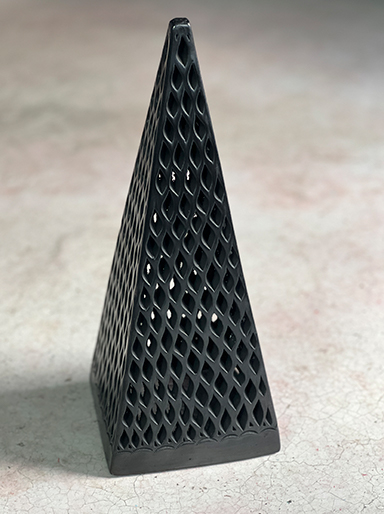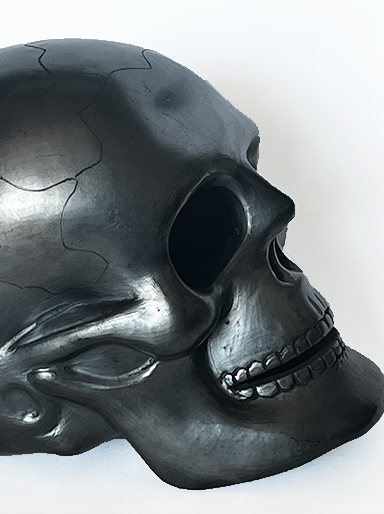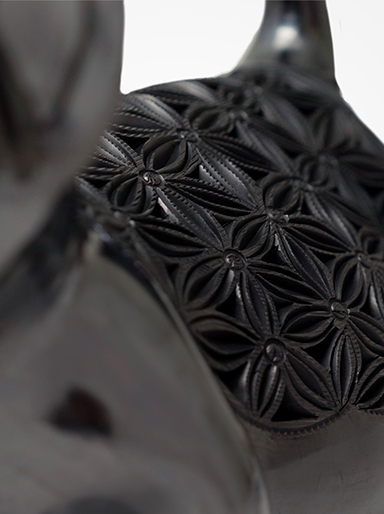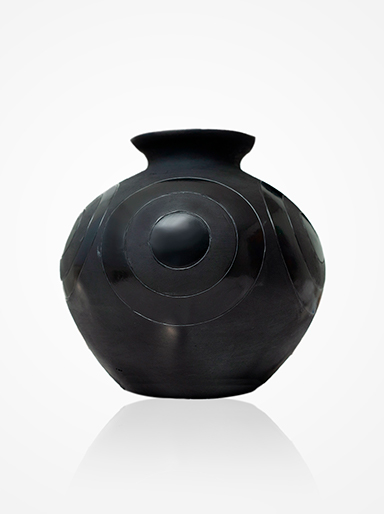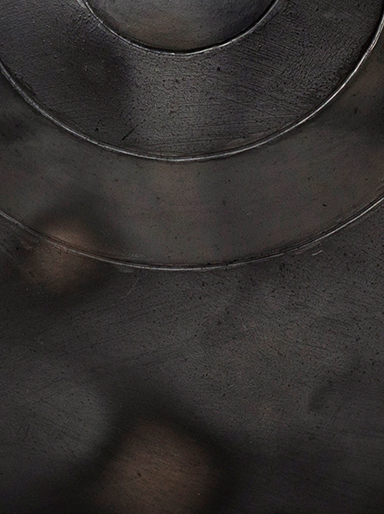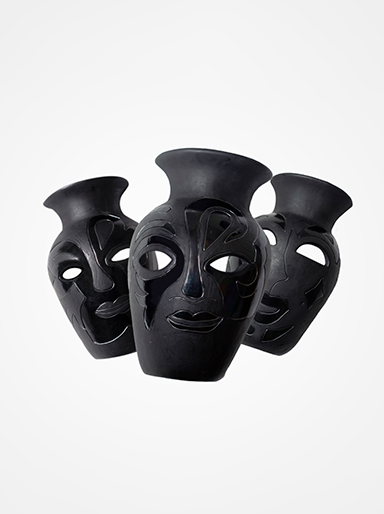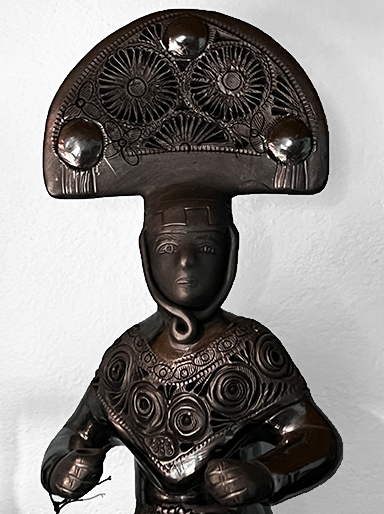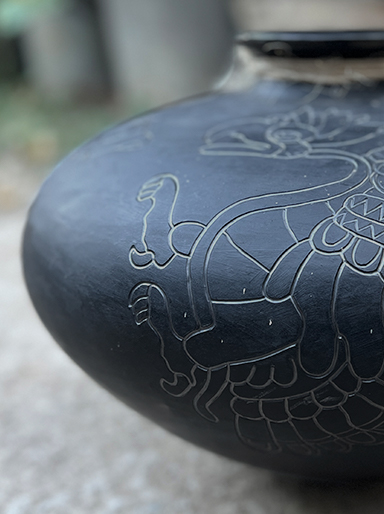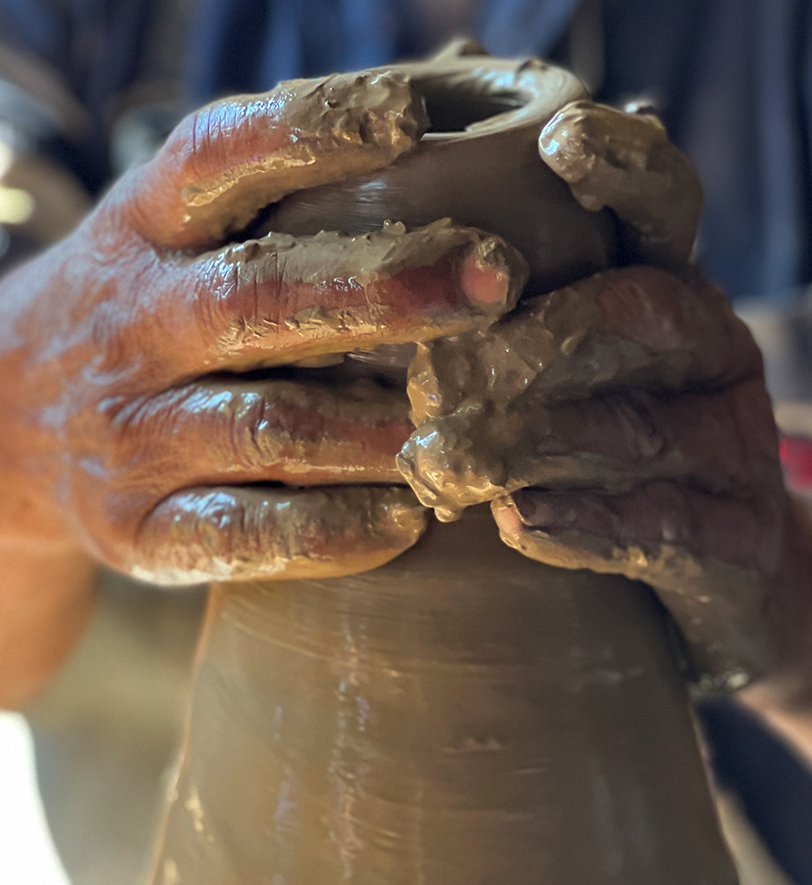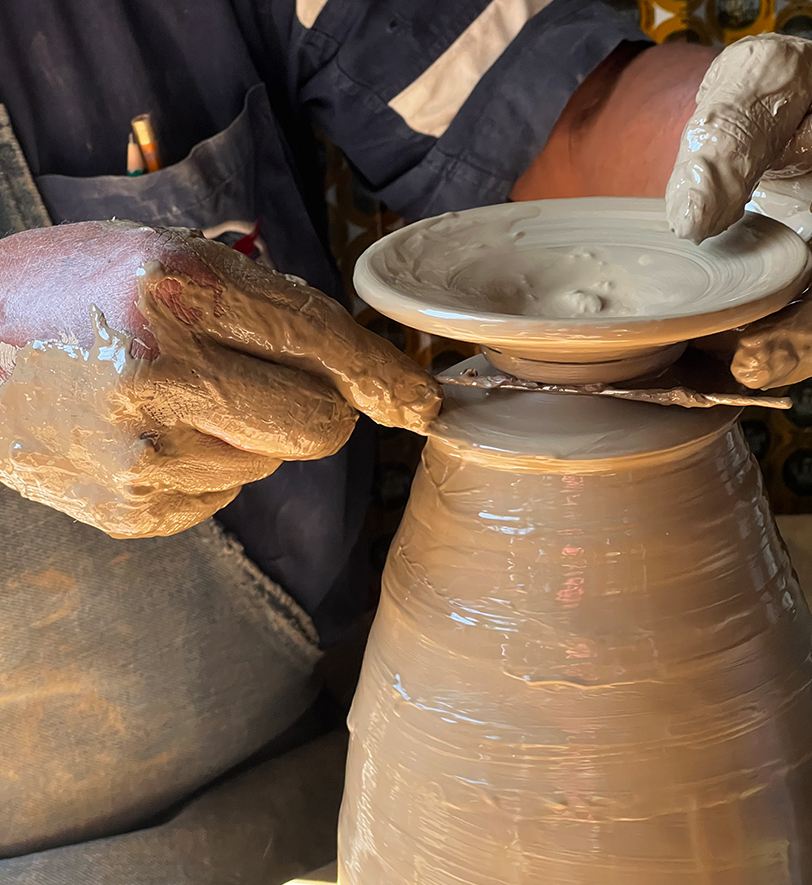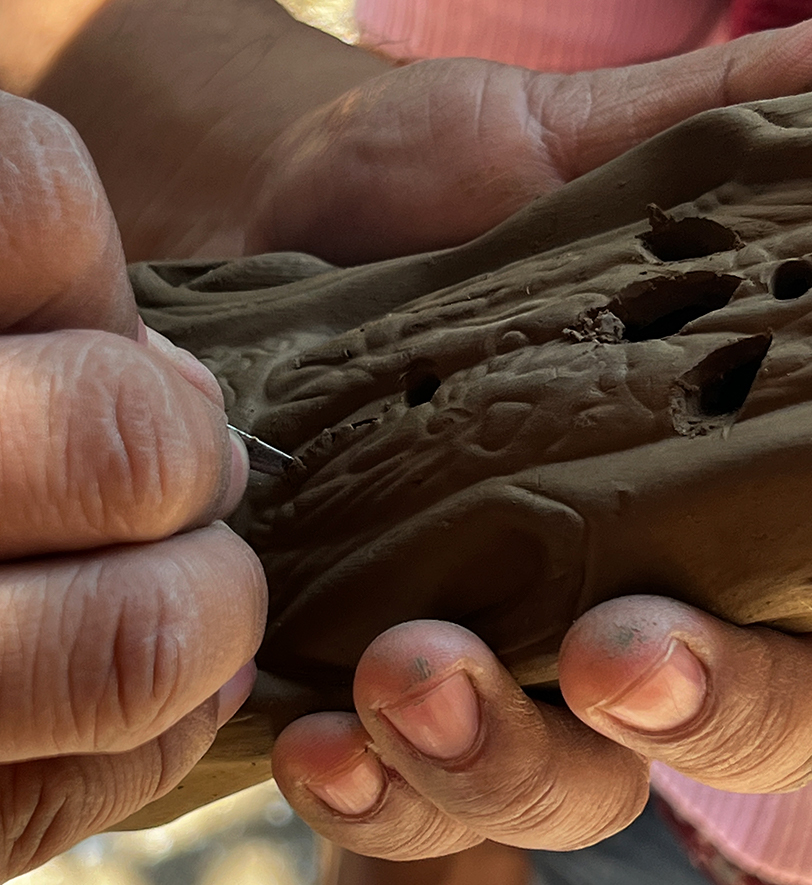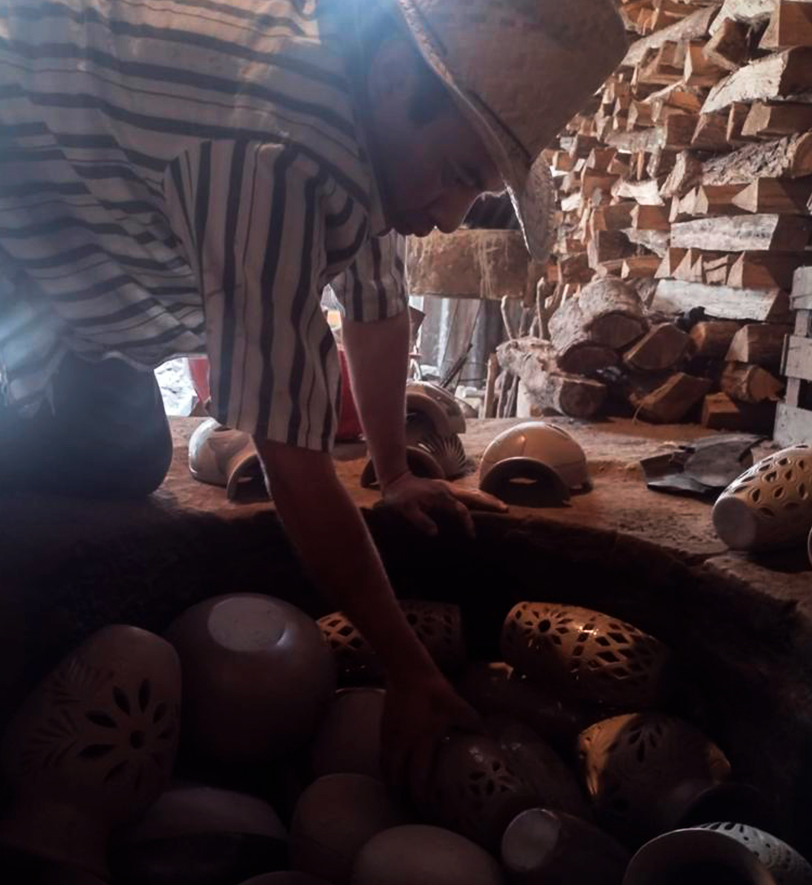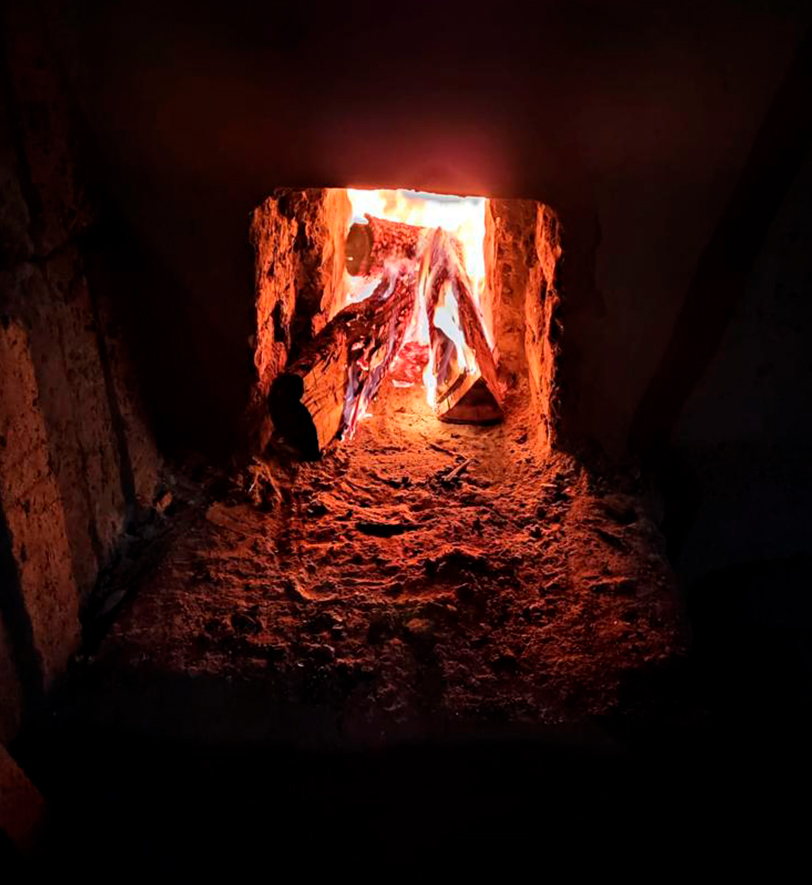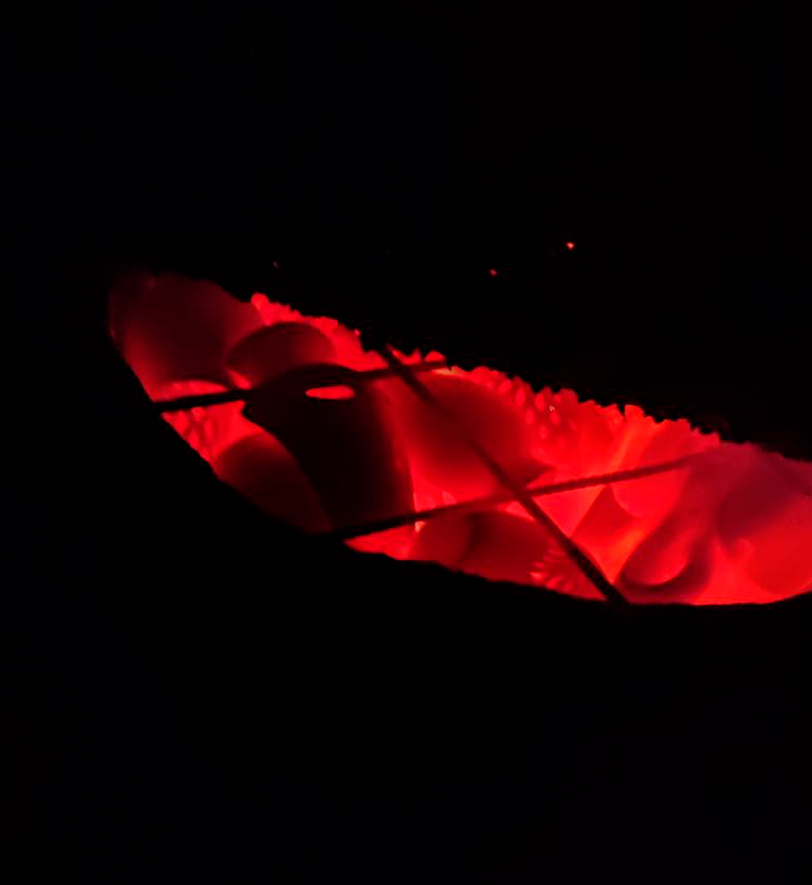History
The pottery made of clay emerged as a technique that aided humanity in various aspects, from water storage to food preservation.
While the fundamental technique has remained largely unchanged, many families have perfected and modified it over generations to achieve unique finishes. One such family is the Ortiz family, and Luis Ortiz in particular received an honorary mention for his hand-burnished technique combined with sanding block.
Process
Collection
The artisans go to the hills to collect red clay. They clean it by removing branches and leaves, and then mix it with water to achieve the required consistency for kneading.
Modeling
The hands are the main tools of the artisans, using them to create the base of the piece and gradually shape it according to their desired form. The movement of their hands resembles a choreography characterized by an unmatched rhythm and coordination, acquired through years of experience and a deep passion for the craft of pottery. In some cases, they may also use a wooden pottery wheel to assist in the shaping process.
Drying
Once the shape of the piece is created, it needs to be left to dry for a couple of hours in order to give it the final detailing. During this drying process, the clay gradually loses moisture and hardens, making it easier for the artisans to add intricate details and refine the surface of the piece. This step is crucial in achieving the desired aesthetic and ensuring the durability of the finished pottery.
Decoration
Using fine manual tools, artisans meticulously trace figures and symbols into the surface of the pottery. This step requires precision and attention to detail, as the artisans carefully create intricate designs that reflect the cultural motifs and symbolism associated with their craft.
Baked
Once the pottery pieces have been prepared, they are placed in an underground wood-fired kiln and left there until they reach a searing temperature. The kiln is covered with fresh mud to reduce the oxygen supply, creating a smoky environment. The smoke interacts with the pottery's surface, infusing it with an elegant black color. This unique firing technique, known as "smoke firing" or "pit firing," not only imparts the distinctive black hue but also contributes to the unique and organic patterns that emerge on the surface of the pottery. The intense heat and smoke create a transformative process, resulting in the final exquisite black pottery pieces.
Clay is not naturally black, it is during the firing process that it acquires this elegant color.

